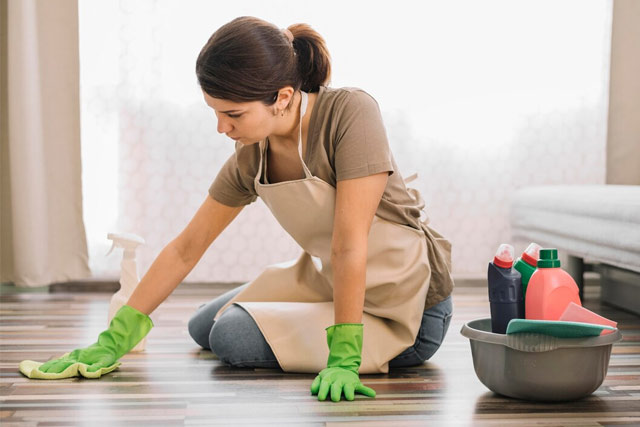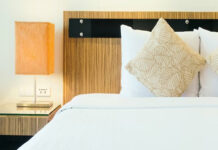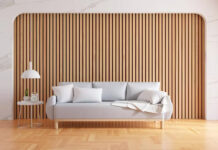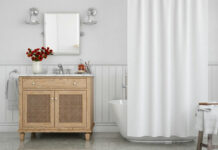Exploring durable engineered hardwood floors involves a deep dive into factors like thickness, durability considerations, installation methods, and maintenance routines. Understanding how the thickness impacts not only the structure but also the style and long-term care is crucial. We’ll delve into factors like the Janka hardness rating and the installation process, highlighting the considerations that make engineered hardwood a resilient and appealing flooring choice for various spaces in your home. From selection to maintenance, each step contributes to the lasting allure of these floors.
1- Thickness

The thickness of engineered wood flooring is a critical factor influencing its durability, style, and sanding frequency.
1.1. Board Composition
Thicker boards boast a robust wear layer and a denser core, providing enhanced sturdiness and resistance to moisture. The plywood layers in the core also contribute significantly to the floor’s durability, with higher-quality plywood offering a more robust foundation.
1.2. Thickness Options
When seeking the best-engineered hardwood, opt for brands offering a range of thicknesses. For instance, a 21/6-inch plank allows up to seven sandings, perfect for high-traffic areas. Conversely, a 15/4-inch-thick board, sandable five to six times, suits less active spaces.
1.3. Veneer Benefits
A thicker top veneer enhances resistance to stains and scratches, especially when compared to thinner wood flooring planks. This durable surface layer is particularly advantageous in moisture-prone areas like bathrooms and basements.
1.4. Stability Advantage
Engineered wood floors exhibit greater stability than solid wood floors, reducing the likelihood of expansion or contraction with temperature and humidity changes. This stability makes them an excellent choice for moisture-prone areas like basements.
1.5. Bamboo as an Alternative
While not technically wood, bamboo shares many benefits with engineered wood floors, including durability and versatility. Bamboo, a renewable resource, can be sanded, stained, and installed similar to traditional wood floors.
1.6. Brand Considerations
When selecting the best-engineered wood, factor in the brand’s reputation and warranty. For example, Anderson Tuftex is renowned for quality craftsmanship, offering a residential lifetime limited structural warranty on its engineered wood floors. Additionally, it provides a variety of color options, textures, and a thermal-treated finish, enhancing finish layer durability.
2- Durability
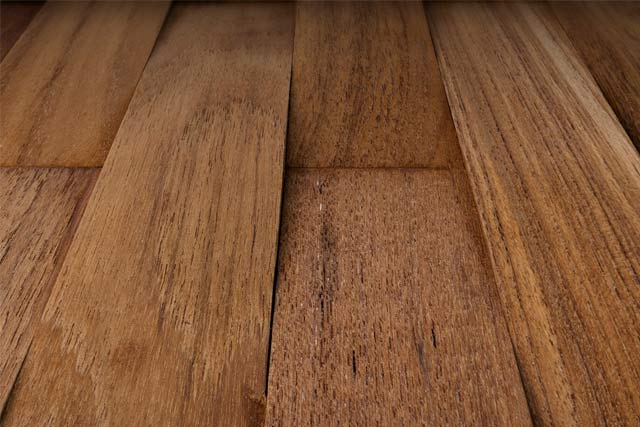
Durability is a pivotal consideration in choosing the most resilient engineered wood flooring, influenced by manufacturing processes, wood type, and hardness.
2.1. Janka Hardness Rating
An essential aspect to examine in hardwood flooring is the Janka hardness rating, indicating wood strength. Hardwoods like hickory, oak, and maple, with higher hardness, are generally more durable than softer alternatives.
2.2. Finish and Coating Impact
Durability is also affected by the finish and coating of the flooring. Different finish levels are available, offering varied protection against stains and scratches. Higher protection levels may necessitate more frequent maintenance but ensure a prolonged attractive appearance.
2.3. Core Construction and Wear Layer
Factors such as core construction and wear layer thickness influence durability. A core made from high-density fiberboard (HDF) or stone-plastic composite reduces the risk of shrinkage, swelling, or warping compared to solid wood. A thicker wear layer enhances resistance to moisture.
2.4. Installation Method
The chosen installation method affects durability, with interlocking planks designed for the floating floor method gaining popularity. Other installation methods include nail-down, glue-down, and staple-down.
2.5. Maintenance Similarities
Similar to solid wood floors, durable engineered floors require regular sweeping and vacuuming to eliminate dirt and dust particles. Neglecting frequent cleaning can result in ground-in dirt causing damage over time. It’s advisable to use a hardwood flooring cleaner free of harsh chemicals.
3- Installation

Engineered wood flooring offers easy installation, suitable for laying on top of existing floors. Its moisture and scratch-resistant features make it an excellent choice for homes with pets or children.
3.1. Core Structure and Veneer
The most durable engineered hardwood floors features a real hardwood veneer glued to a core made of plywood or fiberboard, providing stability. Manufacturers often use a combination of hardwood species like maple, cherry, oak, walnut, and hickory for the veneer.
3.2. Wear Layer Thickness
In addition to the veneer type, the thickness of the wear layer impacts durability. Thicker veneers offer better protection against dents and scratches and enable more refinishing compared to thinner counterparts.
3.3. Installation Guidelines
Follow the manufacturer’s instructions for engineered hardwood installation. Ensure the subfloor is level and dry, remove any existing carpet or materials, mark the room dimensions, and lay down the underlayment. Nail down the first row, maintain a 1/2-inch expansion gap, and use spacers or tape. Complete the installation with subsequent rows, cover expansion gaps with matching baseboards, and finish with trims and molding.
3.4. Acclimatization Process
Before applying the final polyurethane coat, allow the floor to acclimate for 24 hours. This ensures proper wood conditioning for moisture and temperature control, ensuring the floors are ready to be enjoyed for years.
4- Maintenance

Durable Engineered hardwood floors significantly enhance home value and longevity with proper care.
4.1. Cleaning Routine Importance
Develop a cleaning and protection routine for your home to preserve the beauty of engineered hardwood floors. Regular sweeping and light mopping is generally recommended.
4.2. Cleaning Frequency
The frequency of cleaning depends on foot traffic. High-activity areas may require a sweep and light mop twice per week, while less-used spaces may benefit from a weekly basic clean. Maintain a low moisture level to prevent wood flooring from swelling and cracking over time.
4.3. Effective Sweeping Techniques
Daily or bi-weekly sweeping using a soft broom or a vacuum with a soft attachment removes dirt without damaging the floors. If using a vacuum, set it to the bare floor setting to avoid accidental scratches.
4.4. Shoe Considerations
Be mindful of the shoes worn on wood floors. High heels and sports shoes with spikes can cause serious damage over time. Opt for softer-heeled shoes or sneakers. Additionally, use felt pads under furniture legs to prevent direct contact damage.
4.5. Doormats for Protection
Install doormats near entrances to trap dirt, gravel, and outdoor materials, preventing them from reaching hardwood floors. Promptly wipe up any spills to avoid penetration and damage.
4.6. Overall Protection Strategy
Adhering to these simple maintenance tips will go a long way in keeping your durable engineered hardwood floors looking great and protecting them from the everyday wear and tear of a busy household.
Conclusion
In summary, exploring engineered hardwood flooring unveils its durability and adaptability. Factors like thickness, core construction, and veneer types impact longevity. Choices in wood type and wear layer thickness contribute to the enduring appeal. Regular maintenance and protective measures preserve the floors’ elegance. Engineered hardwood is more than a flooring solution—it’s a resilient, stylish investment, promising lasting beauty.

